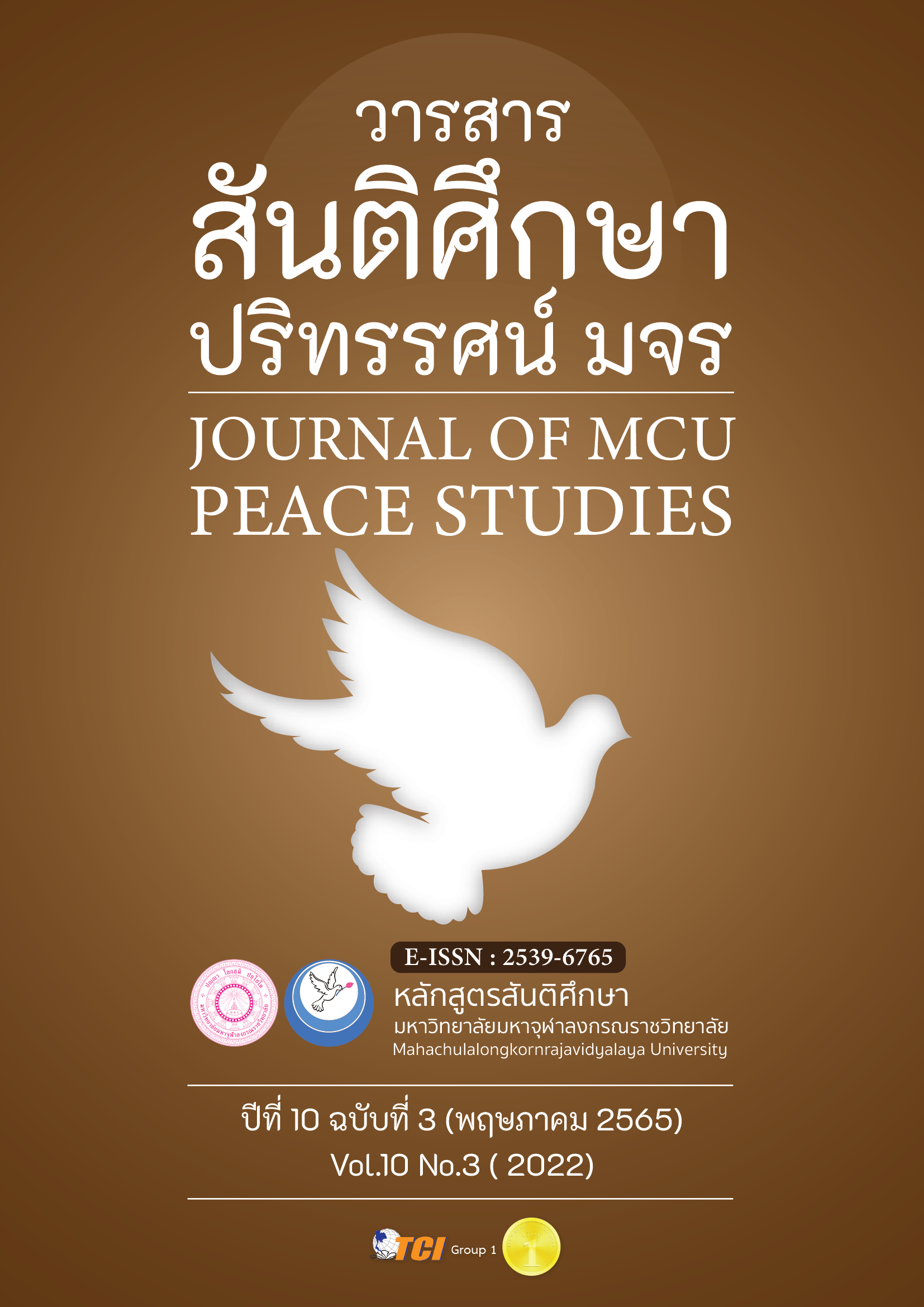แนวทางการบริหารสถาบันอุดมศึกษาในยุคดิจิทัล
Main Article Content
บทคัดย่อ
บทความวิจัยนี้มีวัตถุประสงค์เพื่อศึกษาแนวทางการบริหารสถาบันอุดมศึกษาในยุคดิจิทัล บทความวิจัยนี้เป็นการวิจัยเชิงบรรยาย ด้วยการสังเคราะห์เอกสารและสัมภาษณ์ผู้ทรงคุณวุฒิ กลุ่มผู้ให้ข้อมูลในการวิจัย ได้แก่ ผู้ทรงคุณวุฒิที่มีส่วนเกี่ยวข้องในการบริหารสถาบันอุดมศึกษา จำนวน 7 คน ได้มาโดยการเลือกแบบเจาะจง เครื่องมือที่ใช้ในการเก็บรวบรวมข้อมูลเป็นแบบสังเคราะห์เอกสารและแบบสัมภาษณ์แนวทางการบริหารสถาบันอุดมศึกษาในยุคดิจิทัล ทำการวิเคราะห์ข้อมูลด้วยการวิเคราะห์เนื้อหา
ผลการวิจัยพบว่า แนวทางการบริหารสถาบันอุดมศึกษาในยุคดิจิทัล ผู้บริหารสถาบันอุดมศึกษา ควรกำหนดเป้าหมายในการบริหารสถาบันอุดมศึกษา เพื่อพัฒนาบุคคลให้มีความเชี่ยวชาญ เป็นมนุษย์ที่สมบูรณ์ และมีทักษะในศตวรรษที่ 21 โดยอยู่บนหลักปรัชญาของเศรษฐกิจพอเพียง ธรรมาภิบาล เสรีภาพทางวิชาการ ความเป็นอิสระ ความเป็นสากล ความเสมอภาค และความรับผิดชอบต่อสังคม การจัดภาระงานของสถาบันด้วยการวิจัย การจัดการศึกษาที่ตอบสนองความต้องการของสังคม การบริการวิชาการเพื่อสังคม การบริหารทรัพยากรมนุษย์และงบประมาณแนวใหม่ การทำนุบำรุงศิลปวัฒนธรรมที่เข้ากับยุคสมัย และการจัดการเทคโนโลยี และมีกระบวนการบริหารสถาบันอุดมศึกษาด้วยการศึกษาสภาพปัจจุบัน แนวโน้มในอนาคต กำหนดวัตถุประสงค์ที่ชัดเจน ดำเนินการตามแผน ตรวจสอบและประเมิน และนำผลไปปรับปรุงและกำหนดมาตรฐาน
Article Details

อนุญาตภายใต้เงื่อนไข Creative Commons Attribution-NonCommercial-NoDerivatives 4.0 International License.
ทัศนะและความคิดเห็นที่ปรากฏในบทความในวารสาร ถือเป็นความรับผิดชอบของผู้เขียนบทความนั้น และไม่ถือเป็นทัศนะและความรับผิดชอบของกองบรรณาธิการ ยินยอมว่าบทความเป็นลิขสิทธิ์ของวารสาร
เอกสารอ้างอิง
Chiangkul, W. (2016). Report of the State of Thai Education 2014/2015: How to Transform Thai Education to Keep Up with the World in the 21st Century. Bangkok: Pimdee Printing Company Limited.
Chulalongkorn University Strategic Plan. (2017-2020). Chulalongkorn University Strategic Plan 2017 –2020. Retrieved March 24, 2018, from http://www.osm.chula.ac.th/images/stories/news/n590915/ST-Plan-60-63.pdf
Educational Statistics Report. (2019). Annual Review 2018-19. Retrieved September 2, 2020, from https://www.ox.ac.uk/annual-review-2018-19
Kaewphichit, S. (2009). The Practice of Good Governance in Private Higher Education Institutes. Veridian E-Journal, Silpakorn University, 2(1), 155-174.
Khan Academy and Stanford University. (2021). Office of the National Economic and Social Development Council (NESDC) (2016). Retrieved December 24, 2020, from https://www. khanacademy.org/
Maesincee, S. (2017). Education Administration to Create Thailand 4.0. Bangkok: Faculty of Education. Bangkok: Chulalongkorn University.
National Education Act. (1999). Office of the National Education Commission (2001). Higher Education Reform Guidelines based on the National Education Act 1999. Bangkok: VTC Communication Limited Partnership.
Office of the Civil Service Commission (OCSC). (2020). Good governance principles of good corporate governance. Retrieved January 24, 2021, from https://www.ocsc.go.th/sites/default/iles/attachment/article/7.1_hlakthrrmaaphibaalkhngkaarbrihaarkicchkaarbaanemuuengthiidii.pdf
Othakanon, L. (2018). University 4.0: Productivity Education. Journal of Graduate Studies Valaya Alongkron Rajabhat University, 12(3). 249-265.
Royal Thai Government Gazette (2019). SE Thailand, 2019 Retrieved December 24, 2020, from https://www.sethailand.org/StanfordUniversity
Saichai, K. (2018). The State Educational Administration of Higher Level Institutions and the Characteristics of Organization Promoting Innovation. Research and Development Journal Suan Sunandha Rajabhat University, 10(1), 1-12.
Sararatana, W. (2014). Education Administration in and for 21st Century. Retrieved March 24, 2018, from http://www.mbuisc.ac.th/phd/thesis/administration.pdf
The Times Higher Education World University Rankings. (2021). Stanford University Today. Retrieved December 20, 2020, from https://facts.stanford.edu/wp-content/uploads/sites/20/2021/02/Stanford-FactBook-2021-v7.6-FINAL.pdf
The Times Higher Education. (2020) World University Rankings 2021. Retrieved September 2, 2020, from https://www.timeshighereducation.com/student/best-universities/best-universities-world
Ueakit, A. (2020). An Administration of Higher Education Institutions During Corona Virus Outbreak Situations (COVID-2019). Journal of Buddhist Philosophy Evolved, 4(2), 120-130.


